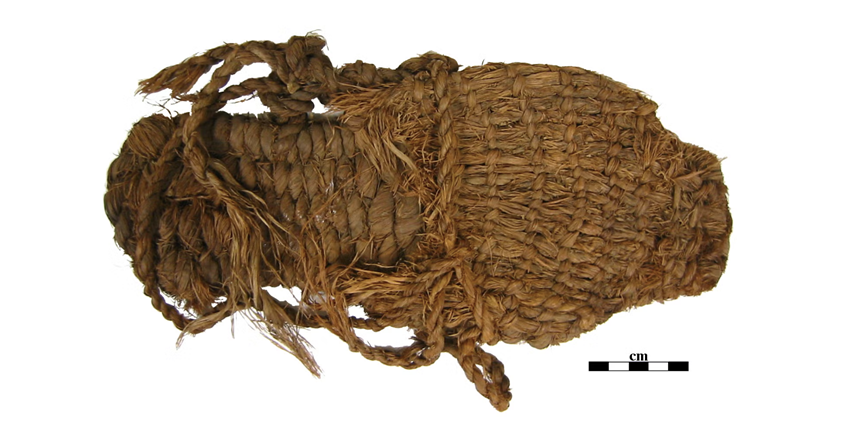10,000-Year-Old Sandals from Fort Rock Cave in Oregon, USA are the oldest known footwear ever discovered. The Fort Rock Sandals were found beneath a layer of volcanic ash that was deposited during the eruption of Mount Mazama in 7,600 BCE.

Anthropologist Luther Cressman made a significant archaeological find in 1938 at Fort Rock Cave, Oregon. He discovered a collection of ancient sandals buried beneath layers of volcanic ash. Dating back to the eruption of Mount Mazama around 7,600 BC, these sandals provide invaluable insights into the lives of early humans in the region. While Cressman initially suspected their great age, it wasn’t until 1951, with the advent of radiocarbon dating, that their true antiquity was confirmed, dating back over 9,000 years.

Fort Rock sandals are made of shredded sagebrush bark. They are twined, with pairs of fiber wefts twisted around passive warps. All of these sandals were of the same distinctive style, with a flat sole and toe flap covering the top of the foot.
The Fort Rock sandals are characterized by their unique construction. They feature a flat, tightly woven sole made from twisted pairs of fibers. The sandal’s upper is created by twining the fibers from heel to toe, followed by an open-twining technique to form a toe flap. Cressman believed that a tie rope was used to secure the sandal around the ankle.

The largest collection of Fort Rock sandals is located at the University of Oregon Museum of Natural & Cultural History; others are housed at the Nevada State Museum, the Klamath and Lake County museums, and the Oregon Historical Society.
